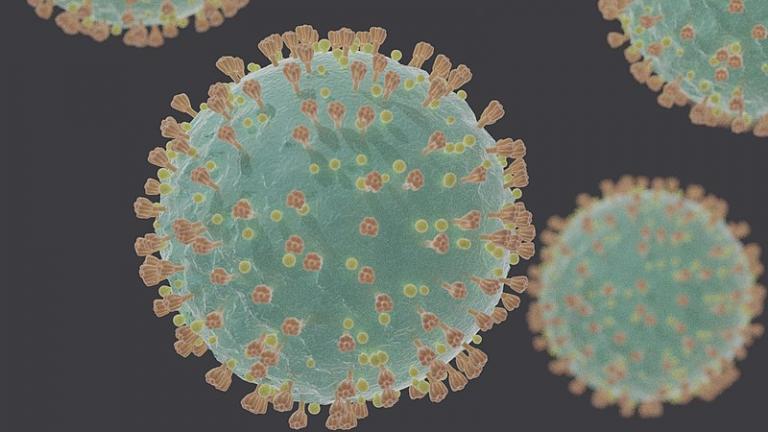
Just a couple thoughts and an invitation to discussion:
First, the first “relief” bill has already been passed — it offers 2 weeks paid sick leave to everyone, and a total of 12 weeks at 2/3rds pay for parents whose kids are home from school or daycare.
There are a couple quirks.
First, it only provides benefits (federal benefits paid through a mechanism of refundable, advanced tax credits to employers) to workers at companies with fewer than 500 employees. This is, of course, being portrayed as a giveaway to Big Business, although, viewed purely through a financial lens, it is a giveaway to small businesses, if one presumes that larger employers will be prevailed upon through social pressure to provide paid leave to their employees regardless of whether they’re covered by a mandate or reimbursed.
I don’t know what the rationale was, though, and it seems like it would have marginally been improved by phasing out that 500 maximum, or, say, by providing tax credits for all employers, for the first 500 employees (or, since not all will use it, for the first fractional X% of 500 employees).
The other peculiarity is that the extended benefit, which was originally envisioned to cover a wide variety of situations — caregiving, extended illness, etc. — was narrowed down in negotiations, to only childcare, but at the same time, it covers parents of children under 18. Yes, it imagines that a seventeen year old needs a parent’s direct supervision.
And I’m asking myself if this was intentional, or a drafting error. The original bill’s list of reasons for leave was pretty wide — was it written this way intentionally to give as many people as possible justification for taking leave? Note that the child care tax credit and deduction apply only to children under age 13; your teenager’s keep-them-out-of-trouble summer activities don’t count as child care.
In reality, I do wonder how people will respond. Will someone who’s trying to manage to keep projects going, find the 2/3s pay offer (which in one iteration at least was nontaxable, though I’m not looking it up again now) sufficient to cause them to abandon work-at-home efforts? What about blue-collar workers currently cobbling together some childcare arrangements with family or neighbors? In some cases, it’s probably a good thing for them to abandon that — but others are needed workers.
Second, it seems to me that one of the first actions ought to be to target the Unemployment Insurance system. Yes, I know, there are issues around logistics (and, again, employees whose job it is to keep the system working, or who have the knowledge to be brought in to expand capacity, ought to be working, not on childcare leave). And the newly-passed bill does target it to some degree, with provisions to waive look-for-work requirements, to send some cash to states to help with the cost, and so on, but we can do more: in particular, as long as the unemployment rate is expected to be super high, we can boost the reimbursement rate from its current 50%, and waive maximums. (Will there be unintended consequences, such as employers looking for drivers for delivery services but unable to hire because the UI system has been too effective at meeting needs? I don’t know. What do you think?)
The other key issue with the UI system, besides maximums/benefit rates and ability to process claims, is that self-employed people aren’t a part of the system. It seems to me that there is a way to bring them into the system, though. In the long-term, it would require premiums in the same manner as employers pay now, but in the short-term, well, we can’t retroactively collect premiums so you do what you can. But here’s how it could work, on a long-term basis: the government tracks unemployment rates in various sectors (e.g., Uber drivers) or calculates a hypothetical impact of economic downturns, then cuts checks based on the most-recently reported self-employment income, and reported sector in which it’s earned. (Are Door Dash and Uber Eats drivers doing just fine? Are “regular” Uber drivers finding other sorts of driving-related ways to earn income, by becoming Shipt shoppers? A lot of this is unclear now anyway.)
Or something like that, anyway.
Which gets us to the big proposals under consideration now to just cut big checks to everyone, repeated as many times as necessary, for stimulus purposes. A half billion. A trillion, Multiple trillions. Just turn on the printing press and don’t stop.
I’m not a fan.
I think there are two key issues that are being conflated.
In the short-term, there’s a tremendous disruption to the economy. Literally. Illinois will be under a “stay-in-place” order starting tonight. No non-essential businesses open. (Very glad we replaced the boys’ shoes last weekend! — if this continues on for too long, the definition of “essential” shopping will have to change from groceries and drugs to a wider variety of items that are a part of everyday life and can’t just be ordered online.) People whose livelihood depended on other people eating out, traveling, being entertained in public, etc. — all of that is wiped out. They need immediate relief.
Once this is over — whether truly over-over or with a new-normal in which we’ve figured out some combination of treatment (including treatment capacity) and avoidance and schools have reopened but quite possibly with continued ongoing elevated mortality — then the economy will need traditional stimulus boosts.
In other words, at this point in time, I don’t think a “stimulus” package as traditionally conceived of as measures to boost demand makes sense. In the prior “send a check” rounds, the idea was that even if someone didn’t need it to remedy financial crisis in their lives, they would spend it on dinner and a movie they would otherwise not have gone to, which would have beneficial effects for the economy down the line. I don’t see that happening right now, because people’s ability to spend money is so tightly constrained. Is there really value for the economy in an otherwise-not-in-need person getting a check which they deposit in the bank with hopes to spend on a vacation next fall?
Which makes the checks into a form of economic relief, but a very crude one. Should we shrug off the crudeness of it all and say, “speed of response is more important than fine-tuning”? I don’t know. I fear that we will unleash wholly unpleasant unanticipated effects on the economy if we just turn on the spigots without a meaningful plan in place.
For high earners, this can be adjusted for with temporary income tax rates for 2020 which have the effect of clawing back the money. But this likewise doesn’t differentiate between those who have coronavirus-related financial struggles and those who don’t, among middle earners. And various iterations of the proposal intend to issue checks based on income in 2018, which also misses the point.
In the same way, there are squabbles about whether money should go to people who didn’t earn anything at all. I suppose you can make the case that it never hurts to give extra cash to those who have always been poor, regardless of whether they have been directly affected by the pandemic. But what about retirees? What is the point in giving checks to people who simply are not a part of the workforce anyway, as a part of an economic relief policy? I suppose they could be facing additional costs in the short-term, if they now start ordering their groceries rather than going out to the grocery store, but that’s simply not on the same scale. And there is no precedent for boosting retirees’ government benefits because their IRAs have dropped in value.
So that’s it for now.
Readers, what do you think?
Image: yes, that’s the 100 million mark bill I bought at a German flea market.













